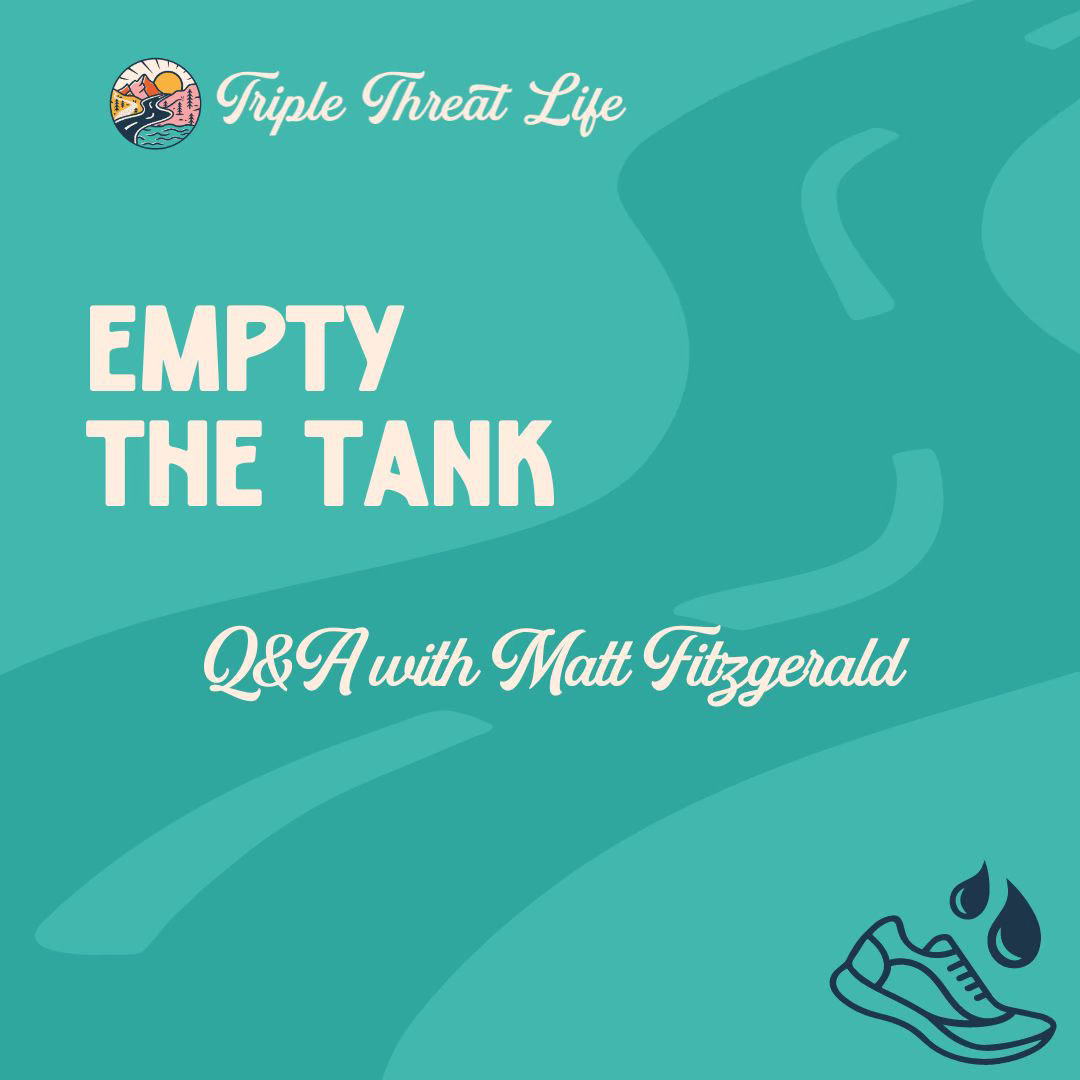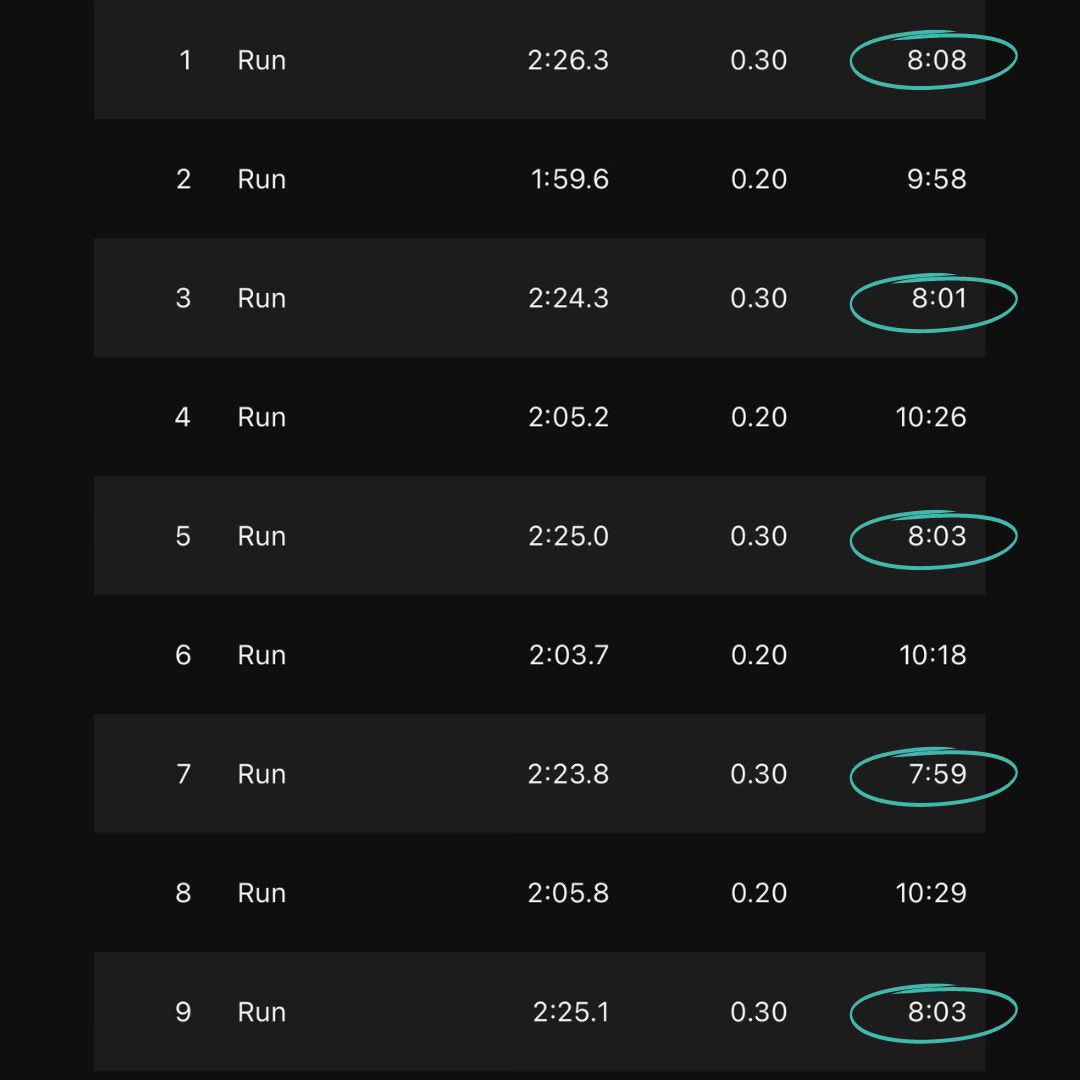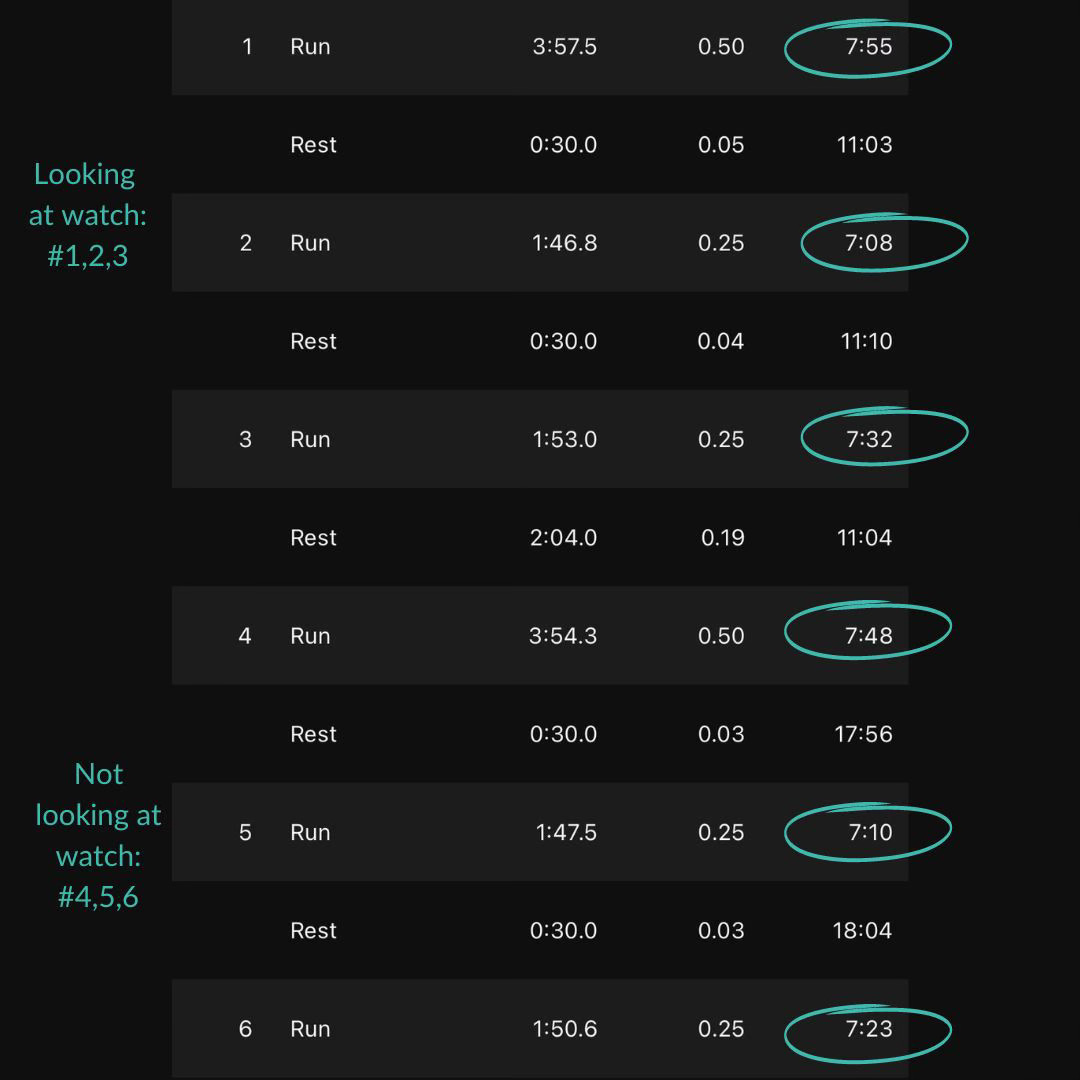A race can be defined as an attempt to get from point A to point B in the least amount of time possible, and there are a number of factors that will determine your success.
Physical fitness, mental preparation, fueling, ect.
But arguably the most important factor is pacing, or the ability to use judgement to make good decisions about how to moderate effort over a specific distance.
There’s a phrase that’s become associated with the art of finding your limit. It’s one that my husband often uses when talking about his pre-race plan…
Empty the Tank.
But the trick is emptying the tank by the finish line and not at mile 12 of your half marathon, so how do we accomplish that?
I had the opportunity to interview Matt Fitzgerald (yes the Matt Fitzgerald!) about his new book: How to Run the Perfect Race: Better Racing Through Better Pacing to see if we could gain some pearls of wisdom about how to become a “pace master.”
Why do we suck at pacing?
Well, in short because pacing is hard! Fitzgerald defines pacing as “the art of finding your limit,” and let’s face it, finding your limit hurts. A lot.
But it’s more than that. It also has to do with experience. An athlete who’s been running for 30 years is going to be better at pacing (theoretically) than an athlete who’s been running for 7 years. (Yes, this is an example of me and my husband.)
Another reason is that most runners, and triathletes, have become overly dependent upon technology to do the pacing for us, which hinders body awareness and judgement- both essential skills for pacing.
“The thing to understand about endurance performance is that perceptions don’t just indicate our limits; they are our limits. When you feel you can’t run any harder, you can’t, and when you feel you can, you can- no matter what the numbers say.” - Matt Fitzgerald
Think about this scenario. You’re running, easy or hard, it doesn’t matter.
Can you accurately estimate how far you’ve run, without looking at the GPS on your watch? Hmmm…
Can you accurately estimate the pace you’re running, without looking at your watch? Uhhh…
That’s kind of his point.
But the cool thing is that you can get better at estimating pace, distance, and time, which will make you better at pacing. How? The same way you get better at running, with practice!
“The typical runner recognizes that pacing matters and knows they need to get better at it, yet does little more to improve the skill than vaguely try to get better each time they compete. Mastering the skill requires a more intentional, structured, and sustained approach.”- Matt Fitzgerald
Fitzgerald describes pacing as a democratizing element of the sport. This makes sense because your ability to be good at pacing has nothing to do with speed, talent, or physical ability. You can be a slow runner and be great at pacing.
He says the skill of pacing is based upon three key traits: body awareness, judgement, and toughness.
Body awareness is a feel for your limits, so asking yourself questions like “Can I sustain this effort for the rest of the race” or “Am I feeling how I should at this point in a workout?”
In the book, Fitzgerald suggests a great exercise to develop this ability called body scanning. While running, you focus on a small piece of the experience at a time. But don’t try to change anything; just notice how you feel.
This might include examining your breathing, the rhythm of your arms and legs, tension in your face and shoulders, perception of speed, and contact with the ground.
Time limit estimation, or how long you think you could sustain a certain pace, is another great skill. Within the book, Fitzgerald provides a standardized RPE (rate of perceived exertion) scale with a physiological correlate and corresponding time limits.
It’s a great way to learn what a specific RPE value is supposed to feel like.
For example, a 5/10 is a pace you could sustain for 2:00:00, a 6/10 is a pace you could sustain for 1:00:00 and a 7/10 is a pace you could sustain for 20-30 min.
I thought about this on my 8-mile run last weekend that was supposed to be a RPE of 4/10. During the run, I asked myself if I could sustain my current pace of running for 5:00:00? Most of the time, the answer was no, so I backed off a bit.
Developing good judgement
Developing good judgement, as it relates to pacing, is a common theme throughout the book.
Fitzgerald says the most common mistake runners make is setting workout pace targets based on aspirations rather than a realistic assessment of fitness. Of course, this is easier if you have a coach who can help you with this type of thing.
“Aspirational workout goals inevitably lead to overreaching and frustration,” he says. “Remember to always train as the athlete you are today, not as the athlete you hope to be on race day.”
His most common errors in pacing during a race include:
1. Bad planning or not having a plan
2. Not sticking to the plan
3. Sticking too much to the plan
So you should have a well-thought out, specific plan, and you should commit to sticking to the plan. But you should also have the ability to adjust the plan when needed.
“All too often runners arrive at the start line with a well thought out pacing plan for the race, only to crumple it up and go faster then intended, whether in reaction to the athletes around them, or as a panic response… It’s almost as if the you who plans for the race is different from the you who does the race, a less rational version of yourself addled by adrenaline, stress, and competitive juices.”
- Matt Fitzgerald
When determining pacing goals for a race, we should consider pace first and time second. You can do this by using benchmark workouts to define what that means for you as an athlete. (There are several examples in the book for 5K up to marathon distance.)
Then, we have to consider outside influences, like course, terrain, and weather conditions.
Finally, Fitzgerald cautions against being afraid to make a mistake. It’s ok to make a mistake! That’s how we learn, but we have to make a conscious effort to do better the next time, not just repeat the same mistake over and over again.
Becoming a mentally tough runner
As far as Fitzgerald is concerned, if you want to become a mentally tough runner, then you’re halfway there. “The rest is just figuring out the details.”
“Some athletes are willing and able to suffer more than others, and only those who are willing to suffer the most realize their fully potential in races. Remember, running performance is ultimately limited by perception of effort and not by fitness, which merely constrains performance.” - Matt Fitzgerald
Something I really related to in this book was the chapter that discussed strategies for emotional self-regulation. For most of us, running close to our limit tends to produce negative emotions, which can have an impact on performance.
Fitzgerald talks about using acceptance as a strategy to cope with the discomfort you feel when emptying the tank during a race.
“This entails making peace with, or being okay with discomfort. You’re not trying to persuade yourself that you’re not really uncomfortable- that doesn’t work. Rather you’re accepting your discomfort as a necessary part of the task you’re performing. You can’t control how you feel when you’re running, but you can control how you feel about how you feel…” he says.
Special Pacing Challenges
Remember how Fitzgerald talked about our tendency to rely on devices to do the pacing for us? Well, he has a few “pacing challenges” to help you better develop that ability.
I really liked an exercise called precision splitting, which is something you can do with a set of intervals like 8 x 400m or 6 x 800m. The first option is to pick a target time and aim to nail each interval perfectly. The second option is to run the first interval by feel, capture the time, and aim to hit each subsequent rep. (I like this method best).
I tried this today during a 30-minute brick run my coach had planned. I was supposed to do six .30 intervals in a specific pace range. So, I ran the first one, looked at my watch, and tried to think about what the effort felt like. Then, I ran the remaining five intervals without looking at my watch and tried to maintain the same pace…
I wasn’t sure how this was going to go, but I was pleasantly surprised by the result!
I did my own version of this exercise during another brick run my coach had planned this week. This one was a bit harder because I had three different paces to hit during a single run: above 5K, under 5K, and at 5K. This is more of a challenge for me because I often have a hard time distinguishing between “fast paces,” so “easy fast,” “medium fast,” and “fast fast.”
For the first three intervals, I looked at my watch to get the feel of each pace. Then, for the second set of intervals, I tried to hit each based on how I thought it should feel, without looking at my watch. I was super proud that I actually did it!
There’s another exercise called long accelerations where you run for a set period of time- 3, 6, or 11 minutes, and the goal is to continuously accelerate to the end. So you can’t slow down and you can’t plateau. Also, you can’t look at your watch…
This one seems very hard, but I’ll have to try it one of these days.
“Mastering pacing is not about learning how to run completely by feel, paying no attention to numbers. It’s about finding your limit, which requires a fine calibration of subjective perceptions against objective measurement.”- Matt Fitzgerald
Even if you aren’t doing speed work, paying closer attention to pace, distance, and time is something you can do on long, easy runs too. During my 8-mile run last weekend, every time my watch clicked over at a mile I would start an internal timer and see if I could estimate how far I’d run.
So, I would say, “Ok, I think I’m at .40, and I’d check my watch and see .48.”
It was a fun exercise and helped to keep my mind focused instead of daydreaming, which I’m prone to do on long, easy runs…
Members of the Triple Threat Life Club get access to a Q&A with Matt Fitzgerald.
Keep reading with a 7-day free trial
Subscribe to Triple Threat Life to keep reading this post and get 7 days of free access to the full post archives.







